Acoustic sensors enable efficient and non-invasive monitoring of a wide range of species, including many that are difficult to monitor in other ways. Although they were initially limited in application scope largely due to cost and hardware constraints, the development of low-cost, open-source models like the Audiomoth in recent years has increased access immensely and opened up new avenues of research. For example, some teams are using them to identify illicit human activities through the detection of associated sounds, like gunshots, vehicles, or chainsaws (e.g. OpenEars).
With this relatively novel dimension of wildlife monitoring rapidly advancing in both marine and terrestrial systems, it is crucial that we identify and share information about the utility and constraints of these sensors to inform efforts. A recent study identified advancements in hardware and machine learning applications, as well as early development of acoustic biodiversity indicators, as factors facilitating progress in the field. In terms of limitations, the authors highlight insufficient reference sound libraries, a lack of open-source audio processing tools, and a need for standardization of survey and analysis protocols. They also stress the importance of collaboration in moving forward, which is precisely what this group will aim to facilitate.
If you're new to acoustic monitoring and want to get up to speed on the basics, check out these beginner's resources and conversations from across the WILDLABS platform:
Three Resources for Beginners:
- Listening to Nature: The Emerging Field of Bioacoustics, Adam Welz
- Ecoacoustics and Biodiversity Monitoring, RSEC Journal
- Monitoring Ecosystems through Sound: The Present and Future of Passive Acoustics, Ella Browning and Rory Gibb
Three Forum Threads for Beginners:
- AudioMoth user guide | Tessa Rhinehart
- Audiomoth and Natterjack Monitoring (UK) | Stuart Newson
- Help with analysing bat recordings from Audiomoth | Carlos Abrahams
Three Tutorials for Beginners:
- "How do I perform automated recordings of bird assemblages?" | Carlos Abrahams, Tech Tutors
- "How do I scale up acoustic surveys with Audiomoths and automated processing?" | Tessa Rhinehart, Tech Tutors
- Acoustic Monitoring | David Watson, Ruby Lee, Andy Hill, and Dimitri Ponirakis, Virtual Meetups
Want to know more about acoustic monitoring and learn from experts in the WILDLABS community? Jump into the discussion in our Acoustic Monitoring group!
Header image: Carly Batist
WILDLABS & Fauna & Flora
I'm the Platform and Community Support Project Officer at WILDLABS! Speak to me if you have any inquiries about using the WILDLABS Platform or AI for Conservation: Office Hours.





- 18 Resources
- 22 Discussions
- 6 Groups
- @crazybirdguy
- | Him
Field Biologist at Yayasan Cikananga Konservasi Terpadu, Indonesia, with experience and interest mainly in ornithology, citizen science and bioaccoustic
- 0 Resources
- 6 Discussions
- 12 Groups
- @StephODonnell
- | She / Her
WILDLABS & Fauna & Flora
I'm the Executive Manager at WILDLABS.



- 152 Resources
- 665 Discussions
- 30 Groups
WILDLABS & Wildlife Conservation Society (WCS)
I hold a PhD in Biological Sciences and specialize in bioacoustics and passive acoustic monitoring of cetaceans in the Argentine Sea and Antarctica. Recently, I've also embraced computing to leverage technology in enhancing our conservation efforts.



- 0 Resources
- 2 Discussions
- 14 Groups
PhD Candidate in autonomous marine biodiversity modelling

- 0 Resources
- 11 Discussions
- 8 Groups
FruitPunch AI
CTO and Founder of FruitPunch AI




- 0 Resources
- 4 Discussions
- 11 Groups
- @stefan_istrate
- | he/him
Machine Learning Researcher & Nature Photographer. Building conservation tech for biodiversity monitoring at Wildlife Insights.

- 0 Resources
- 2 Discussions
- 9 Groups
Freaklabs
I'm an engineer and product designer working on wildlife conservation technology.



- 0 Resources
- 272 Discussions
- 14 Groups
Centre national de la recherche scientifique (CNRS)
Behavioural ecologist @CNRS in France - working mostly on ungulates in Europe and Africa


- 0 Resources
- 5 Discussions
- 6 Groups
Aarhus University
Biologist and Research Technician working with ecosystem monitoring and research at Zackenberg Research Station in Greenland
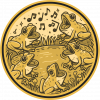



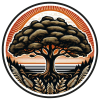
- 12 Resources
- 216 Discussions
- 7 Groups
Wildlife Acoustics
Wildlife Acoustics is the leading provider of bioacoustics monitoring technology for biologists, researchers, and government agencies worldwide. Our customers study vocal wildlife and make impactful discoveries that expand our understanding of the planet.


- 6 Resources
- 2 Discussions
- 2 Groups
San Diego Zoo Wildlife Alliance
Wildlife ecologist with a passtion for conseration technology.

- 0 Resources
- 3 Discussions
- 4 Groups
Do you have photos and videos of your conservation tech work? We want to include them in a conservation technology showcase video
17 May 2024
Article
Read in detail about how to use The Inventory, our new living directory of conservation technology tools, organisations, and R&D projects.
1 May 2024
Article
The Inventory is your one-stop shop for conservation technology tools, organisations, and R&D projects. Start contributing to it now!
1 May 2024
Technology to End the Sixth Mass Extinction. Salary: $132 - $160k; Location: Seattle WA; 7+ years of experience in hardware product development and manufacturing; View post for full job description
1 May 2024
TBC is looking for an applicant to lead on the design, analysis and reporting of data from a wide range of innovative bat population monitoring surveys with a particular focus on passive acoustic monitoring, undertake...
24 April 2024
Full-time 3 year postdoctoral fellowship in Escondido, CA
22 April 2024
In a recent publication we tested Underwater Passive Acoustic Monitoring (UPAM) as a feasible non-invasive technique to study the calling behavior of therathened aquatic Andean frogs under natural conditions in the...
6 April 2024
What can soundscapes tell us about ecosystem functioning and health? We are looking to hire a postdoctoral researcher in ecoacoustics for Nature Recovery at Oxford
2 April 2024
Hussey Labs seeks a senior post-doctoral researcher/senior research associate for movement ecology of Greenland halibut in the context of fisheries management across Baffin Bay-Davis Strait, Eastern Canadian Arctic.
13 March 2024
Catch up on the conservation tech discussions and events that happened during World Wildlife Day 2024!
7 March 2024
Do you know anyone interested in this position? Let them know by sharing widely.
27 February 2024
The Ecological Acoustics and Behavior Lab at the University of New Hampshire seeks a PhD student to join our lab to investigate how forest habitat affects moose occupancy and soundscape in northern New Hampshire
13 February 2024
June 2024
July 2024
event
September 2024
event
April 2024
event
March 2024
43 Products
Recently updated products
| Description | Activity | Replies | Groups | Updated |
|---|---|---|---|---|
| You're awesome Tim, thank you! However, we ordered another from GroupGets yesterday and it's arriving tomorrow, so we (should) be good to go : ) Now if I can only get... |
|
Acoustics | 6 months 2 weeks ago | |
| Brilliant - thank you.! Great idea about the screen too - I'm replacing some of them monthly so may try that myself. Have you found any issues with the mesh generating... |
|
Acoustics | 6 months 2 weeks ago | |
| Hi Vicki,I've sent you a private message. |
+1
|
Acoustics | 6 months 3 weeks ago | |
| Thank you! |
|
Acoustics | 6 months 3 weeks ago | |
| A few more! |
|
Acoustics | 7 months ago | |
| Hi, thanks so much for getting back. You can reach me at [email protected] |
|
Acoustics | 7 months 1 week ago | |
| Interesting! Hi Sean, sounds like an excellent project. Definitely talk with the Arbimon folks! As @carlybatist said, I am working with birds in the Peruvian Amazon, but in... |
|
Acoustics | 7 months 2 weeks ago | |
| Hi everyone, I wanted to provide an update on behalf of Wildlife Acoustics regarding some of these comments in this thread. As some of you may know, we have just announced... |
+19
|
Acoustics, Sensors | 7 months 2 weeks ago | |
| I second that! |
|
Acoustics | 8 months ago | |
| I wish to share an update on my MSc thesis project, that contributes to the field of decoding animal communication. In my work I... |
|
Acoustics, Data management and processing tools, Early Career | 8 months 2 weeks ago | |
| Hi Wildlabbers!We were asked to share this opportunity to present at the upcoming Audiomoth conference:Presenters are urgently needed -... |
|
Acoustics | 8 months 4 weeks ago | |
| I've tested a Petterson ultrasonic microphone with a sample rate of 384khz and it works out of the box with this software as well. Would be cool to sound localize some bats. |
+22
|
Acoustics | 8 months 4 weeks ago |
Bioacoustic device security in urban parks
8 March 2024 2:49pm
24 March 2024 9:38pm
We suggest and use Python Locks for urban areas here in Australia. Can also screw the Mini 2 to a tree or phone post with the python lock.
5 April 2024 12:55pm
We've deployed passive acoustic monitors in various urban environments without any issues of theft, even in locations where camera traps and other technology has been historically taken or vandalised. I think acoustic sensors generally look less valuable than other technology, and I would recommend removing or covering any stickers or labels on devices that would otherwise make them more appealing! Placing them in hedgerows or on trees with some (but not too much!) foliage will help keep them well hidden too.
Not so silent spectators: How spectator vessels at international sailing regattas alter marine soundscapes
3 April 2024 4:50pm
Check out how water-based sporting events are impacting underwater noise pollution for marine life.
Seventh International Conference on the Effects of Noise on Aquatic Life
3 April 2024 4:34pm
Postdoctoral Research Associate in Ecoacoustics
2 April 2024 2:49pm
Think Wildlife Podcast | The Role of Bioacoustics in Conservation with Bourhan Yassin, Founder of Rainforest Connection
28 March 2024 11:27pm
Hi,
I am Anish and I'm new to this platform! I host the Think Wildlife Podcast and wanted to share a recent episode with Bourhan Yassini. We talk in-depth about the role of AI and bioacoustics in conservation. Tune in to listen more!
AI for Conservation!
4 March 2024 8:51pm
22 March 2024 12:29pm
Welcome, Have you considered participating in any of the AI for Good challenges. I find it is good way to build a nice portfolio of work. Also contributing to existing open source ML projects such as megadetector or to upstream libraries such as PyTorch is good way to getting hired.
22 March 2024 5:57pm
Thank you for the tip! I'll definitely consider contributing to open source projects and taking part in challenges :)
25 March 2024 5:22am
We could always use more contributors in open source projects. In most open source companies Red Hat, Anaconda, Red Hat and Mozilla, people often ended up getting hired largely due to their contributions on open source projects. These contributions were both technical such as writing computer code and non-technical such as writing documentation and translating tools in their local language.
European Congress on Orthoptera Conservation
22 March 2024 9:35pm
Recording Orthoptera Sounds: International Workshop (Italy)
22 March 2024 9:25pm
How does behavior influence the use of technology for animal detection ?
22 March 2024 7:49pm
Leveraging Actuarial Skills for Conservation Impact
15 March 2024 12:31pm
19 March 2024 6:35pm
Thank you for your response Akiba. I will have a look. 👏🏻
19 March 2024 7:52pm
I would look into the TNFD (Taskforce on Nature-Related Disclosures), Finance for Biodiversity, Accounting for Nature, etc. which are all focusing on how to incorporate nature risk into corporate reporting and sustainability frameworks!
20 March 2024 3:48pm
Thank you Carly, I will definitely take a look.
Unveiling the Cicada Symphony: Seeking Support for Bioacoustics Research
18 March 2024 12:41am
18 March 2024 3:25pm
Ah okay. I found it with google reverse image search:
I thought it would be huge, but it's little. Unbelievable what these tiny things can do for the price. Looks like the battery life will far exceed the capacity of the SD card in it (64GB).
19 March 2024 7:53pm
If you're interested in a free, no-code ecoacoustic analysis platform for your data, check out Arbimon!
BirdWeather | PUC
27 October 2023 7:45pm
2 November 2023 9:20pm
I love the live-stream pin feature!
14 March 2024 10:29pm
Hi Tim, I just discovered your great little device and about to use it for the first time this weekend. Would love to be directly in touch since we are testing it out as an option to recommend to our clients :) Love that it includes Australian birds! Cheers Debbie
16 March 2024 10:47pm
Hi @timbirdweather I've now got them up and running and winding how I can provide feedback on species ID to improve the accuracy over time. It would be really powerful to have a confirmation capability when looking at the soundscape options to confirm which of the potential species it actually is or confirm it is neither to help develop the algorithms.
Also, is it possible to connect the PUC to a mobile hotspot to gather data for device that isn't close to wifi? And have it so that it can detect either wifi or hotspot when in range? Thanks!
The Freshwater Sounds Archive
15 March 2024 10:32am
Introducing The Freshwater Sounds Archive, a global database of sounds produced by freshwater species.
Submit your species-specific or unidentified sounds to the archive now and receive recognition for your contribution in a forthcoming data paper as a co-author!
Senior Post-doctoral Researcher/Senior Research Associate Opportunity: Movement ecology of Greenland halibut
13 March 2024 2:00pm
Labelled Terrestrial Acoustic Datasets
16 February 2024 10:24pm
8 March 2024 11:54pm
Thanks for sharing Kim.
We're using <1 mA while processing, equating to ~9 Ah running for a year. The battery is a Tadiran TL-5920 C 3.6V Lithium, providing 8.6 Ah, plus we will a small (optional) solar panel. We also plan to implement a threshold system, in which the system is asleep until noise level crosses a certain threshold and wakes up.
The low-power MCU we are using is https://ambiq.com/apollo4/ which has a built-in low power listening capability.
9 March 2024 6:25am
<1 mA certainly sounds like a breakthrough for this kind of device. I hope you are able to report back with some real world performance information about your project @jcturn3 . Sounds very promising. Will the device run directly off the optional solar cell or will you include a capacitor since you cannot recharge the lithium thionyl chloride cell. I had trouble obtaining the Tadarian TL-5920 cells in Australia (they would send me old SL-2770s though) so I took a gamble on a couple of brands of Chinese cells (EVE and FANSO) which seemed to perform the same job without a hitch. Maybe in the USA you can get Israeli cells more easily than Chinese ones?
Message me if you think some feeding sounds, snoring, grooming and heart sounds of koalas would be any use for your model training.
9 March 2024 7:01am
Really interesting project. Interesting chip set you found. With up to around 2mb sram that’s quite a high memory for a ultra low power soc I think.
It might also be interesting while doing your research thinking about if there are any other requirements people could have for such a platform with a view towards more mass usage later. Thanks for sharing.
Here's what you missed at World Wildlife Day 2024
7 March 2024 9:02pm
15 March 2024 2:42pm
Support Amazon turtle project
4 March 2024 12:31pm
A PHD POSITION AT NOTTINGHAM TRENT UNIVERSITY
27 February 2024 9:42am
Needing help from the community: Bioacoustics survey
14 February 2024 9:46am
24 February 2024 7:23pm
Was great to chat with you Sofia and I would encourage others in the Acoustics community to help provide input for Sofia's study!
26 February 2024 8:57am
Thank you so much for your encouraging words! I'm thrilled to hear that you enjoyed our conversation, and I truly appreciate your support in spreading the word about my survey within the Acoustics community. Input from individuals like yourself is incredibly valuable to my study, and I'm eager to gather as much insight as possible. If you know of anyone else who might be interested in participating, please feel free to share the survey link with them. Once again, thank you for your support—it means a lot to me!
Best regards,
Sofia
Voice activated recording devices on satellite collars
18 February 2024 7:01am
24 February 2024 8:38am
I am sure Simon can chime in with exact specifications. I do not have it with me now. The centre distance between the attachment holes at each in end is 20mm wich will fit the standard holes in a collar from Vectronics Aerospace.
Simon posted images of the logger attached to a collar on a spotted Hyeana here: https://twitter.com/chamaillejammes/status/1441657479612542990
To-do now done in South Africa:
— Simon Chamaillé (@chamaillejammes) September 25, 2021
☑️ Being ridiculously proud of achieving data transfer over local GSM and LoRa networks for tracker
☑️ Being ridiculously proud of the way our wehear logger fits on lions and hyaenas. Looking forward to listening to their life. pic.twitter.com/CvgvovVjOp
25 February 2024 9:31am
We are studying muskoxen which are exposed to a polar night of between 3-4 month where the sun does not come over the horizon. On the other hand it also means that it will be continously OVER the horizon during the 3-4 summer months.
We are keeping an eye out for kinetic energy harvesting and there has been some interesting progress recently:
https://journals.plos.org/plosone/article?id=10.1371/journal.pone.0285930
@M_Stanton , you provide a nice list of uses of animal borne audio. We could add environmental sounds both abiotic and biotic.
We would LOVE to use audio more for ground truthing behavioural states and we would LOVE if the audio recordings could be GPS time synced...
@jared , it sounds interesting with the mentioned increased capabilities of the Iridium system. Can you link to any references for that?
Cheers,
Lars
26 February 2024 12:43am
I heard it through industry chatter but can't find a news release on it yet.
Insect vibrational communication on AudioMoths
23 February 2024 4:16pm
Funded PhD Opportunity: Moose Acoustics at the University of New Hampshire
13 February 2024 1:21pm
Post-doc possition - Field spanning movement ecology, ecology of fear, bio-logging science, behavioral ecology, and ecological statistics
10 February 2024 7:20am
Bio-Logging Science Symposium
9 February 2024 3:59pm
ISPA: A New System for Transcribing Animal Sounds
8 February 2024 7:17pm
These researchers are introduce the ISPA (Inter-Species Phonetic Alphabet) as a new way to precisely interpret and transcribe animal sounds. By using text to represent sounds, existing human language machine learning models could be used more successfully in field research.
PhD Opportunity - Exploring plants’ sensing capability with vibroacoustics
8 February 2024 5:35pm



















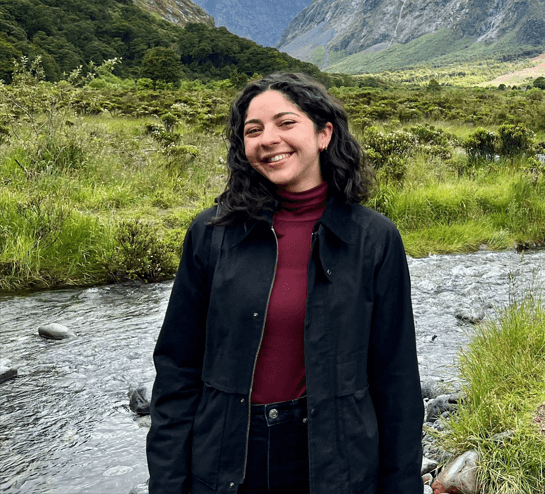







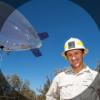
























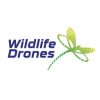










24 March 2024 4:53am
Yes, I agree with Panji......make sure you have notes of where you put them and remember that photos of trees without leaves look completely different 6 months later......not that I would ever make that mistake.........well not again......especially after spending 2 days trying to find 3 ARU's.